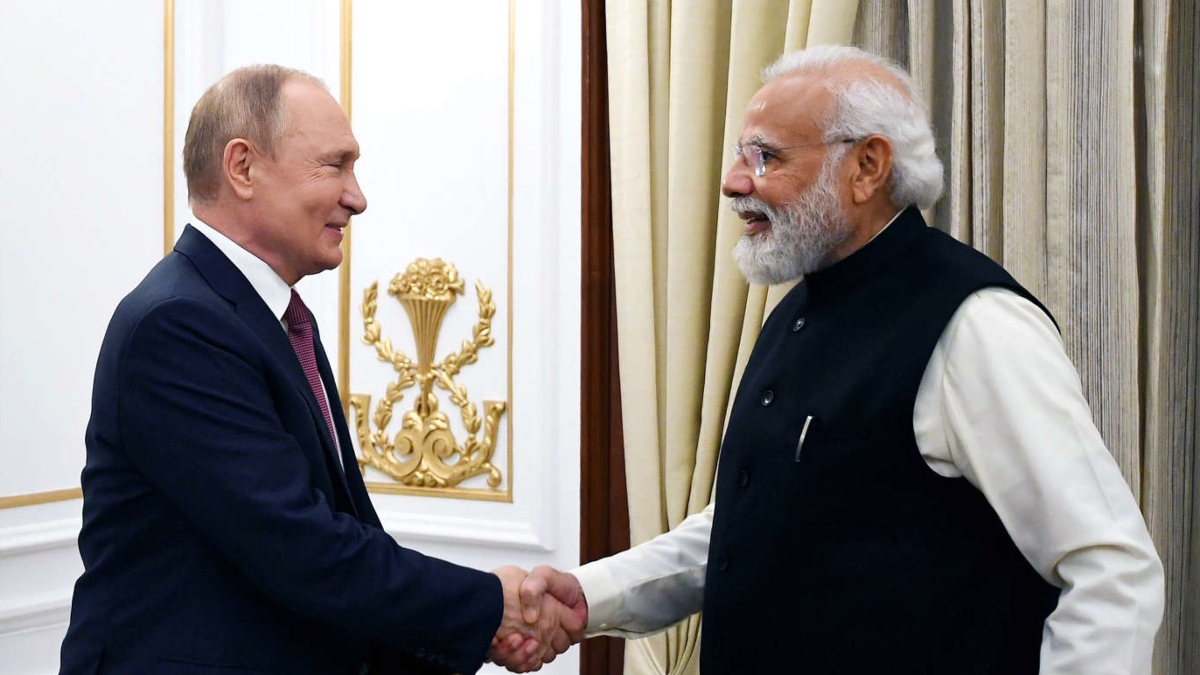


Old friends India and Russia broke new ground in their relationship as they held their first 2+2 dialogue and President Vladimir Putin also came calling for a five-hour visit, only his second trip abroad since the pandemic gripped the world, for the annual summit with Prime Minister Narendra Modi. This reflects the importance Moscow attaches to its relationship with New Delhi and the desire of the leadership of the two countries to give a push to ties in areas from security to trade and investment. This is India’s fourth such engagement with another country and will help to improve Moscow-New Delhi ties, currently fraying under the pressure of larger global power shifts. Of all the diplomatic balancing acts India has to play in this situation of geopolitical uncertainty, the one with Russia is the most significant. It is also true that “India-Russia friendship has stood the test of time”.
New Delhi and Russia have maintained contact amid the pandemic, working closely on the Covid-19 response and the situation in Afghanistan. The delivery of the first of the S-400 air defence systems to India and the two sides signing an agreement on military-technical cooperation for the next decade and finalizing a contract for making more than 600,000 assault rifles for the Indian military shows their defence collaboration remains robust amid efforts by India to diversify its arms procurements, and despite pressure from the US to impose Sanctions under its Countering America’s Adversaries through Sanctions Act regime. There were also discussions on economic cooperation, including arrangements for energy and fertilizers from Russia, and connectivity options. On Afghanistan, the two sides are on the same page, despite Russia’s initial involvement with the Taliban.
The short summit meeting with Prime Minister Narendra Modi in New Delhi highlighted the “all- weather” partnership between the two countries despite trying global circumstances. Not only does President Putin’s visit come as the world faces the grim prospect of the Omicron variant of the COVID-19 pandemic, but it also follows years of growing proximity between New Delhi and Washington, a potential irritant to Moscow. While Russia relies on cordial ties with China to stabilise its interests in an unstable Afghanistan post the U.S.’s exit, New Delhi and Beijing have scarcely seen eye-to-eye on border tensions and geo-political rivalry across the Asia region.
Russia, no doubt, is a friend in need of India; but Moscow’s friendship comes with limitations. Not only would the realities of the global balance of power shrink the robustness of the relationship over time, but, more crucially perhaps, a legacy relationship based on limited interaction might eventually lose the warmth. Today, the India-Russia relationship stands deeply strained by the larger geopolitical realities which neither of them is completely in control of. The quadrilateral dynamics among India, China, the US, and Russia have different implications of varying degrees for all four states in this relationship, in particular for India. Russia’s aversion to India’s closer ties with the US. It is also sensitive about insecurity about India joining the Quad for Indo- Pacific security. The Indian side mentioned China’s “unprovoked aggression” on the border, with Defence Minister Rajnath Singh saying India seeks defence partners that are sensitive to the country’s expectations, pointing to Russia-China defence cooperation.
Despite odds coming in between Indo-Russian relations, both countries strengthened their abiding deep, multi-decade ties, building further confidence in each other.
There are also challenges facing Modi and Putin in terms of maintaining the momentum in bilateral exchanges like: Firstly, the pandemic has periodically crippled the growth of both economies and the threats to public health remain despite considerable progress with vaccinations. Secondly, Russia-U.S. ties are showing signs of deteriorating further, this time over US President Joe Biden’s warning to Putin that Russia will face “economy-jarring sanctions” if it seeks to occupy Ukraine.
India has so far maintained its mantra of ‘strategic autonomy’ in a multipolar world. However, New Delhi will have to work hard to manage the tightrope act between Moscow and Washington. Thirdly, India and China have built an uneasy truce across their Himalayan border as the result of the Galwan valley exchange in 2020, yet numerous potential flashpoints could spoil the relations further, including China’s provocative actions in the South China Sea. Moscow has skilfully managed to remain friends with both but will have to carefully navigate the complex geopolitical scenario.
If New Delhi plays its cards well, it can use Moscow to gain more geopolitical weight in the region while the US provided New Delhi status quo in the region, Moscow could provide India with more direct opportunities. Of course, New Delhi would need to be prepared for adverse reactions from Islamabad and China.
The writer is a retired Inspector General. Views expressed are personal.